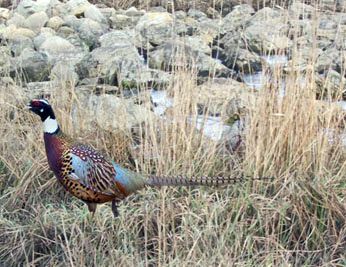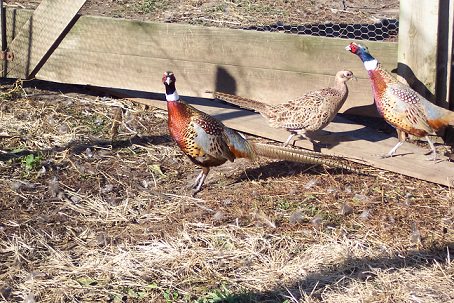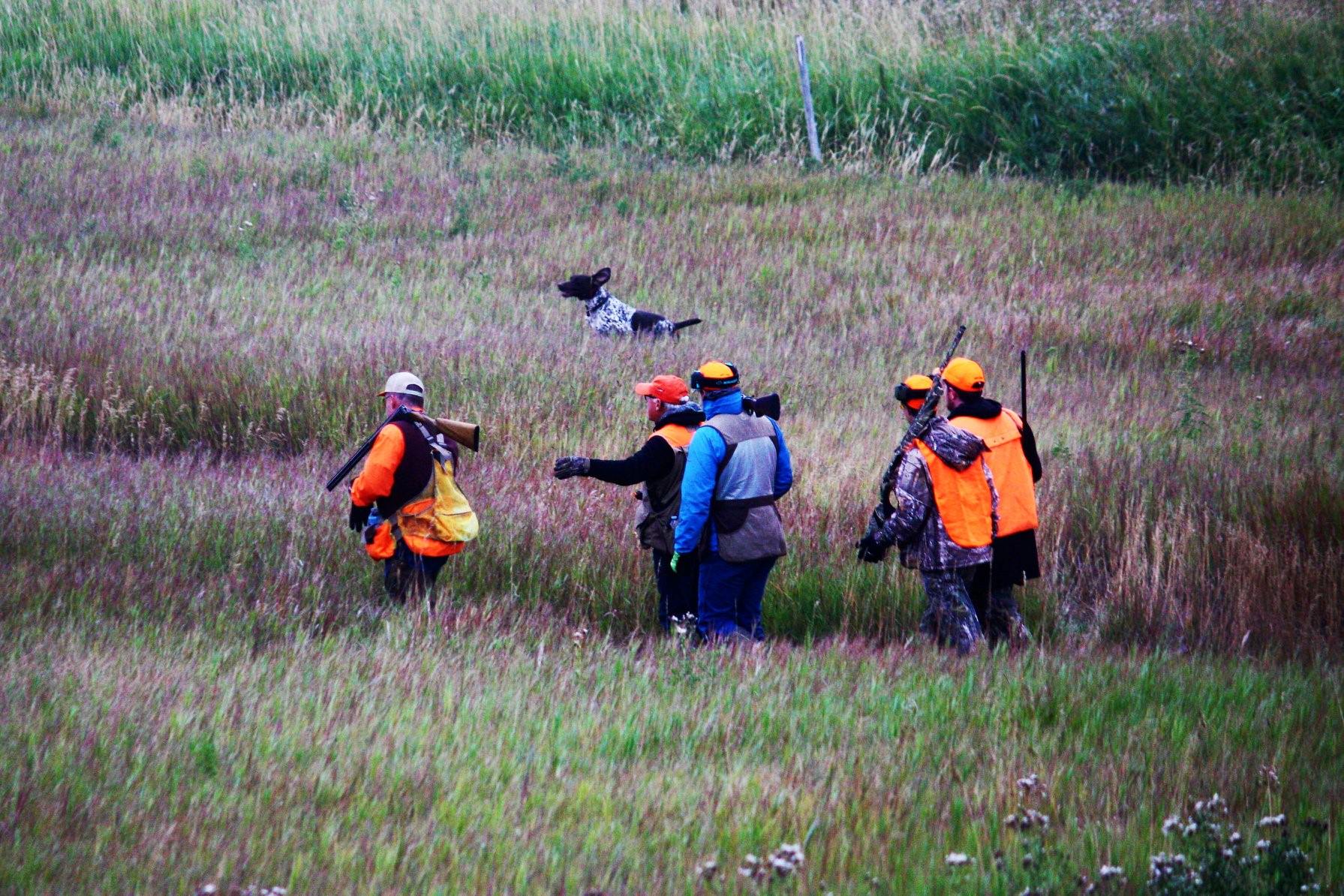The History of MacFarlane Pheasants, Part 1: The Making of the Farm
Editor’s Note: This is Part 1 in a three-part series detailing the rich history of MacFarlane Pheasants, a business that began 86 years ago and has since grown into the largest pheasant farm in North America. Special thanks to the MacFarlane family for providing archived documents and information.
William (Bill) MacFarlane, the president of MacFarlane Pheasants, has been leading the business for 36 years, but the evolution of the company began 86 years ago with the dreams of Bill’s uncle, Ken MacFarlane. His story is deeply rooted in the history of the MacFarlane Pheasant farm, and it’s one of hard work, passion, and tragedy.
Ken was born in 1905 and grew up living, playing, and working on his family’s farm. From an early age he was described as a peacemaker with a warm heart, a boy who was full of fun and had an adventurous spirit. He was an outdoorsman from the start and learned to hunt early in life, spending many hours hunting the thousands of wild geese and ducks that swooped down on the MacFarlane homestead as they flew south in the fall and north in the spring.
Though his nose was not often found in a book, Ken loved any subject related to science or nature. After graduating from high school in 1923, he followed his brother, Don, to the University of Wisconsin—Madison, where he lived at the Field House of the College of Agriculture and earned his rent working with animals there. He graduated with a Bachelor of Science degree in Agriculture in 1927.
After graduation, Ken had the misfortune to break his ankle. However, it was during this time of recovery that he heard the Game Conservation Society was opening a gamekeeper’s school in Atlantic City, New Jersey. The school, sponsored by the DuPont Company, was the first of its kind in the country and would teach its students how to raise game birds, including pheasants. Raising pheasants had been popular in Scotland and England for 400 years, but the concept was new to the United States, and Ken was one of only 25 men chosen to attend the school and explore this new path.
According to an article in the 1927 Janesville Gazette, “Most graduates of the University School of Agriculture used to become scientific farmers: now some may become gamekeepers. Kenneth MacFarlane of Janesville, 1927 graduate of the ‘Ag ’ school, has decided to follow the honorable career of many of his Scotch countrymen—that of a gamekeeper on a large estate.”
With his decision made, Ken had to find a way to get from Wisconsin to New York to begin his schooling. After four days of hitchhiking and expenses that totaled only $10, he arrived at his destination. A highly motivated student, Ken breezed through the two-and-a-half-year program in only one year. After earning his degree, he was asked to stay on as an instructor and did so for about a year before returning to Wisconsin to work for the Wisconsin Conservation Commission. It was only a few months into the job before Ken decided to start his own business raising pheasants.
In 1929, Ken started raising pheasants on his Dad’s farm in rural Janesville, Wisconsin. He moved the operation twice and settled on 15 acres on Center Ave in Janesville. About two years into Ken’s venture, an article in the Madison State Journal stated, “The enterprise is not just a hobby with MacFarlane, but it is a very well paid business. To him it is just a lot of fun, and he insists that it isn’t work, although he gets plenty of exercise during the summer months. He says there isn’t any end to the pleasure he derives from having so many wild birds about him.”
By 1931, Ken had developed the largest commercial game farm in Wisconsin, raising 2,500 to 3,000 birds a year. He was selling to state game departments, shooting clubs, private reserves, estates, and to others starting in the business. At this early stage, Ken would deliver the chicks around the country in a big truck. He loved his customers, and often took friends along to the interesting places he would deliver the chicks, such as Martha’s Vineyard and New York City. The business continued to grow, and in 1935, Ken’s brother, Don, joined him in the business.
Ken married Gwen Althea Crane in 1939, and in less than a year, their daughter, Jean Grace, was born. According to his brother-in-law, Ken’s life was fulfilled, and the family had never seen him happier. Then on November 10, 1940, with his daughter just two months old, Ken left for a short duck-hunting trip on the Mississippi River, near Ferryville, Wisconsin. Sadly, he would not return.
What started out as a beautiful day on the Upper Mississippi ended with temperatures plummeting to -55 degrees and the sudden onset of blizzard conditions. The hunters never realized how quickly the weather had turned deadly. By the end of the long, frigid night that became known as the Great Armistice Day Storm of 1940, 50 hunters had frozen to death. Ken was among them.
Ken and his friend, Norm Schiefelbien had been thrown from Ken’s canoe into the freezing Mississippi River. The next morning Ken was found 200 yards from a residence. Family and friends mourned the loss of this energetic, kind, fun-loving man, who had accomplished so much in only 35 years. Afterward, Gwen returned to her parent’s home with their young daughter and later moved to Pasadena, California, to live near relatives. Don MacFarlane was left alone to carry on his brother’s dream at MacFarlane Pheasants.
Ken’s brother-in-law, Alphonse Medved, memorialized the avid outdoorsmen with the following poem, which speaks to Ken’s bond with nature and honors the man who put his heart into the family farm that is still running strong today.
He is gone a moment brief
Who could respond to bursting leaf,
To sunlight splashing early morn,
To children’s eyes, to joys unborn
He is alive in nights of stars,
In the horizontal bars
Of clouds across the sunset’s sweep
In the startled buck on the wooded steep
He is remembered in many things:
The winter’s white, the green of springs
Renewing life, the scent of pine,
The unraised tendrils of the vine,
Fireflies o’er a singing swamp,
The rushing stream, the moose’s stomp,
The golden song upon the height,
The whirring wings of the pheasant’s flight,
The painful truths left best unsaid,
The kindly deed unheralded,
The honesty to not pretend,
The hallowed handclasp of a friend
He is not gone whose dreams could ring
The outward rim of the planet’s swing
Who could be one with earthly clod,
With common man, with Mighty God.
Related Posts

A Comparison of Hatch Data Between Two Different Genetic Types of Pheasants
Read Post

With Stocks Down, the Pheasant Is Often Taken ‘Private,’ but Purists Don’t Like It
Read Post

Back to the Past – Manchurian Project – Part 2
Read Post

Celebrating Bill MacFarlane!
Read Post

Coming to America: The Pheasant’s History in the United States
Read Post

MacFarlane Pheasants Featured on Public Television
Read Post

MacFarlane Pheasants Donates Pheasants
Read Post

The History of MacFarlane Pheasants, Part 3: The Road Not Taken
Read Post
Take Advantage of These Free Resources
As the biggest game bird farm in the United States, we want to share our experience with you. Download our free resources below and get started.





